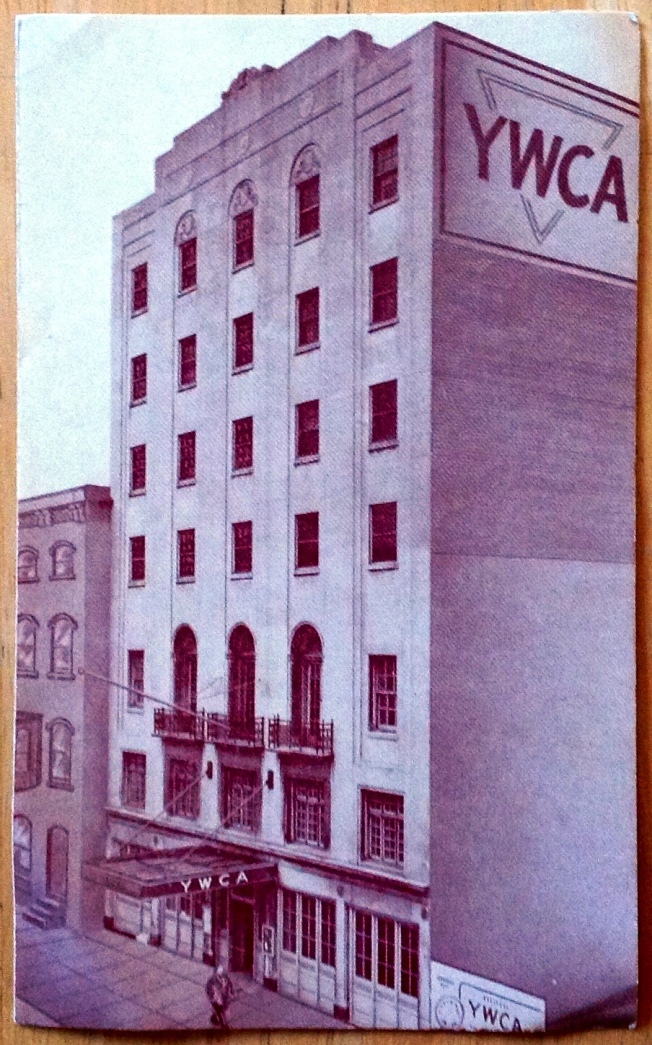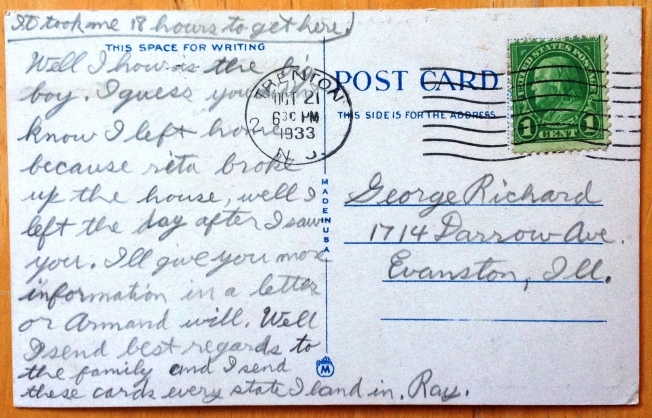Regardless of whether it was necessarily “fun to stay at the Y.M.C.A.,” for many folks it was necessary—especially during peak years of influence, such as the Depression-wracked 1930s. Despite the Y.M.C.A.’s widespread influence and notability as a community institution advocating good health and exercise, misconceptions about its name or even its mission are nevertheless plausible. Recently, I myself needed to revise at least a couple of false assumptions regarding some basics about this historic organization.*
Oddly enough, much of my misinformation about the Y.M.C.A. stems from and relates directly to its very name and branding. My own limited though still formative time spent participating in youth sports at a local Y likewise has bearing. But for years now, perhaps decades, I largely assumed that the acronym stood for Young Men’s Community Athletics, which of course is incorrect on multiple counts.
First, to explain the mistaken “Athletics”: like many other children raised in more urban areas (in my case, in Maryland), my first-hand experience with the Y.M.C.A. dealt primarily with its athletic facilities. To a scrawny seven-year-old, the massive complex and expansive playing fields were indeed impressive in their seemingly sprawling nature.
In fact, the Y.M.C.A. was where I first learned some disappointing yet important lessons about team sports. Mainly, I disliked them immensely, as a participant at least. (I would later prefer the more individualistic sports, such as boxing or tennis, though I was by no means brave enough for the former.) Specifically, I found that the defensive positions on the soccer field generally were fairly tedious postings best suited for watching the grass grow around my cleats—until opponents suddenly raced by to score on the goalie whom I repeatedly let down.
Nonetheless, I learned another active and more useful skill (an actual, life-preserving one) when I also received swimming lessons at the Y.M.C.A. Yes, I’ll forever remember that Olympic-size pool and one such early yet pivotal lesson: the very first time when some instructor encouraged me with patient optimism as I prepared to slip under water with my eyes shut tight, that literal blind faith in the coach as I held my breath and went below the surface. It was a small but significant step, and swimming would turn out to be a key bonding activity for my family. So the membership and whatever fees or donations were not an entire loss. In sum, with these types of activities as the full extent of my experiences at the Y.M.C.A., it’s understandable how I might assume that the last letter stood for Athletics rather than Association.
Next, and the even more surprising point of confusion: I only just discovered that the “C” represents Christian, not Community. This felt like an additionally striking revelation—in that I recall nothing other than a secular though of course supportive quality about my time and experiences at the local Y.M.C.A.
Moreover, not unlike these vintage promotional postcards from the East Coast, any emphasis on the literal “Christian” with my local Y.M.C.A. was in all probability scarce or at least less than prominent. (The organization’s full name and thus the word Christian are likewise wholly absent from the front cover of the widely circulated Y.M.C.A. magazine publication.) The purposes of this I can only assume pertain to branding—branding with as little alienation and as broad an appeal as possible.
In any case, these particular vintage postcards interest me for a number of reasons. Again, they help clarify some of those long-held basic misconceptions that I had about the Y.M.C.A. And while they’re admittedly not the most visually stunning, the Trenton, New Jersey, Y.M.C.A. postcard front is handsomely colorized, more like an illustration than a photo.
Meanwhile, for the Y.W.C.A.—after all, these associations existed for women, too—one such postcard opens as an attractive, tri-fold pamphlet with an old map showing a section of downtown Philadelphia. This same Y.W.C.A. building still sits nearby the Schuylkill River’s east bank, not far across the way from the University of Pennsylvania and Drexel University.
As artifacts, the postcards are additionally informative (and on different anthropological levels). For example, check out those bargain lodging rates for the Philadelphia Y.W.C.A. Even when adjusted for inflation, those prices must be very reasonable still. Then the Trenton Y.M.C.A.: the note on the back of the postcard reveals just one of the many reasons why someone might seek temporary housing at the Y, such as a presumably young man named “Ray” being forced to quickly find shelter on account of another person, whom we’ll only ever know as the formidable “rita” [sic], who once “broke up the house.”
Lastly, these relics feel personally relevant, too. Recalling the frequent, much-anticipated family jaunts up I-95 North to the City of Brotherly Love—to visit perhaps my closest childhood friends, my cousins—I now wonder how many times I might have been near or even passed by this very site of the Philadelphia flagship Y.W.C.A. building (its origins, circa 1870). At its best, for years it served as a much needed place of learning and as a shelter for women and children. No longer: it closed down years ago, but more recently it has served as a charter school. That’s a far better fate for an aging city building when considering the demise of the Philadelphia Y.W.C.A.’s neighboring annex, which stood abandoned for years before it was demolished to make way for some high rise apartments.
Ultimately, I genuinely hope that both the Y.M.C.A. and Y.W.C.A. continue to succeed in their respective missions. The goals feel like more than charity for charity’s sake; rather, this brand of altruism wants to provide a means for change, in order that those who receive help may subsequently help themselves and, ideally, others as well. So even if I never developed into much of an athlete, I still maintain fond memories and respect for the always generous public service of my local Y.
*Remarkably or not, none of these misconceptions had anything to do with the Y.M.C.A.’s reputation of being “associated with homosexual subculture through the middle part of the 20th century,” certainly a status that many listener’s interpret in the popular song by The Village People and later parodied with a memorable dance sequence in Wayne’s World 2.
**Postscript: These YMCA postcards continue to show up in the local thrift shops in my area. For the time being, I’ll add any new picks below here. . . .









